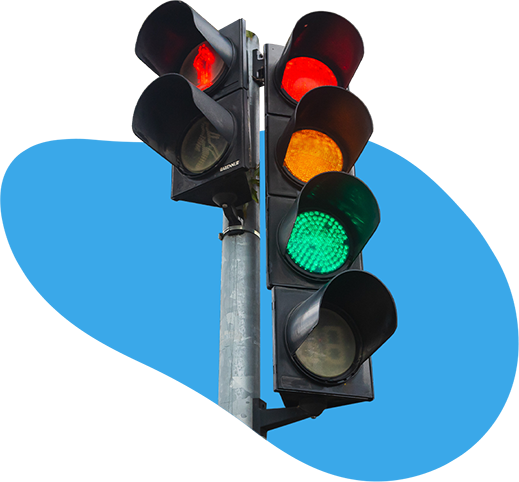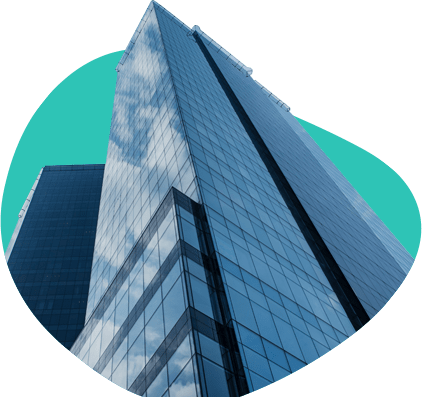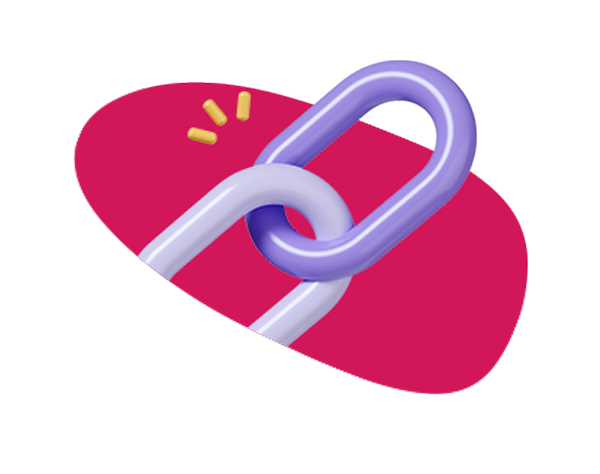The Advanced Guide to B2B SEO

Key Takeaways
- B2B SEO is effective in driving website traffic and qualified leads.
- SEO offers unmatched visibility and low acquisition costs compared to other marketing channels.
- Stacking SEO strategies maximizes results—an integrated approach to SEO delivers greater impact.
- B2B SEO differs from B2C SEO—with multiple decision-makers, longer sales cycles, and lower but higher-intent search volumes.
- Technical SEO is important for establishing a strong foundation—optimize crawlability, crawl efficiency, site structure, and page load time.
- SEO keywords should be intent-driven and address key audience pain points—long-tail and low-volume search terms convert better in B2B markets.
- Content should align with the B2B buyer journey—create top-of-funnel educational content, middle-of-funnel product information, and bottom-of-funnel content (case studies, etc.).
- Generative Engine Optimization (GEO) is growing in importance—AI-generated search results require well-structured, authoritative, and data-rich content.
For a B2B business, one of the most effective forms of boosting brand awareness, attracting website traffic, and driving qualified leads is search engine optimization (SEO). No other form of marketing offers the same level of visibility or low cost of customer acquisition. And SEO is the ONLY marketing vehicle that accrues value over time with compounding returns.
To maximize results, stack your B2B SEO strategies.
For example, technical SEO delivers a solid foundation and improves the impact of everything else you do in your SEO program (a rising tide lifting all boats). Focusing on audience pain points helps you to deliver greater business results. Committing to differentiated content helps you to cut through the noise.
Ensuring content-ICP fit means you’ll be sure that your content is being consumed by your priority audiences. Identifying the keywords on which AI Overviews is appearing in the SERP (search engine results page) helps you to adjust the way you target different topics.
And be sure to deploy creative content strategies to naturally and passively attract many more backlinks from third-party websites, increasing your domain authority.
Is B2B SEO a key part of your marketing efforts? If not, this guide will show you why it should be and how it drives business growth. If you’re already committed to SEO, read on to discover the specific approaches that will elevate your Google rankings, audience reach, organic traffic, qualified leads (SQLs), and sales pipeline to new heights.
B2B SEO vs. B2C SEO
Lower Search Volumes
B2B search volumes are often lower than B2C. Keywords like “corporate security” may have fewer monthly searches compared to consumer-oriented terms. However, these low-volume searches often come from highly engaged, qualified buyers.
For B2B, long-tail keywords can be incredibly valuable, especially when combined with keyword analysis and rank tracking tools to uncover hidden opportunities. Low-volume, long-tail keywords tend to convert better and face less competition, making them a goldmine for B2B marketers aiming to improve the quality of their website traffic and leads.
Search-Driven Strategy with Social in the Mix
In B2B SEO, search remains the primary channel for driving meaningful traffic and engagement. B2B buyers often seek direct answers to specific problems, resulting in a more transactional relationship between search and information discovery.
The focus is SEO solutions that deliver relevant content to meet specific search engine ranking needs. However, LinkedIn also plays a critical role in brand awareness and SEO efforts.
LinkedIn’s algorithm surfaces valuable content, making it a key player in the organic traffic mix. While LinkedIn doesn’t function like a traditional search engine, optimizing your company’s profile and content boosts your visibility. Leveraging LinkedIn’s SEO capabilities alongside your regular search strategies increases your credibility and amplifies your reach within professional circles, ultimately improving your keyword rankings on traditional search engines.
| Aspect | B2B SEO | B2C SEO |
|---|---|---|
| Decision Makers | Multiple decision-makers involved (e.g., designers, CMOs, IT heads). Requires tailored content for each stakeholder. | Single decision-maker or simple decision-making process. Content focuses on individual consumer needs. |
| Sales Cycle | Longer sales cycles due to high-cost decisions and multiple stakeholders. Requires content for every stage of the journey. | Shorter sales cycle, often impulse-driven. Content aims for quick conversions. |
| Search Volume | Lower search volume but higher intent. Long-tail keywords are valuable for capturing engaged buyers. | Higher search volume but lower intent. Broad keywords target mass audiences. |
| Search Strategy | SEO is transactional, with buyers seeking direct answers to specific problems. | SEO is more discovery-based, with consumers exploring options before purchase. |
| Social Media Role | LinkedIn is a critical player for organic traffic, brand awareness, and professional engagement. | Social media platforms like Instagram and Facebook drive brand discovery and engagement. |
B2B SEO Strategy: The Basics for Higher Google Rankings
B2B Keyword Research
Top of the Funnel Keywords
Top-of-the-funnel (TOFU) keywords target prospects in the awareness stage of the buyer journey. At this point, they are becoming aware of a problem, pain point, or need and are in the early stages of researching potential solutions. These prospects are typically exploring a wide range of content, trying to determine whether the issue affects them and what their next steps should be.
Historically, TOFU keywords have been crucial for B2B brands to connect with potential customers early in the buyer journey. According to Gartner, a B2B buyer spends 27% of their time in the purchase journey conducting independent online research, making it essential for brands to capture attention at this stage.
However, with the introduction of Google’s AI Overviews in search results, the dynamics of TOFU keyword traffic are shifting. Google’s AI summaries can now answer top-of-funnel queries directly on the search results page, reducing the likelihood of users clicking through to websites for easily answered questions. This means that while keyword research and content creation for TOFU queries remain important, B2B brands will need to be more strategic in offering deeper, value-driven content that goes beyond what AI-generated summaries can provide.
When doing keyword research for the top of the funnel, focus on understanding the initial problems your prospects are facing and the specific language they use to describe those issues. Your content at this stage should educate prospects not just on their problem but on how to explore potential solutions, offering insights that AI overviews may not cover in detail. By doing so, you can still engage your audience and guide them toward the next stages of their journey.
Middle of the Funnel Keywords
Prospects in the middle of the funnel have a much better understanding of their pain point or desire and are actively researching various solutions. They want to understand their options and how different products/approaches can solve their problem. They haven’t determined exactly how they want to solve their problem yet, and it’s your job to convince them your method is the best.
When doing keyword research in the middle of the funnel, consider the different avenues prospects might take to solve their problem. For example, a digital marketing manager wanting to improve the conversion rates of landing pages could:
- Invest in a landing page creation tool that makes it easy to rapidly create multiple iterations of a page
- Purchase market intelligence software that allows them to more accurately target audiences
- Invest in analytics tools that allow them to better observe user behavior on landing pages
If you’re a SaaS company that sells a landing page creation tool, you want the marketing manager to solve his problem by creating multiple landing pages. At this stage, you don’t have to convince him your product is necessarily the best, just that your approach is.
Focus on identifying methodology, “how-to” keywords at the middle of the funnel. Then create B2B SEO content around those keywords that show the benefits of your approach.
Bottom of the Funnel Keywords
At the bottom of the funnel, prospects are comparing products or services. Keywords at this stage should highlight specific features, benefits, and cost comparisons. Demonstrating how your solution addresses technical issues will differentiate your offering from competitors.
Consider creating side-by-side product comparisons to show why your product or service outperforms others. This kind of thought leadership content can significantly boost conversions and improve keyword rankings for high-intent searchers.
Don’t Forget Strategic Low Volume Keywords and Questions
Targeting low-volume, high-intent keywords can be a powerful way to capture highly targeted traffic. Often, these terms relate to specific content ideas or niche queries that other brands overlook. By using SEO tools like Semrush for site audits, you can uncover these hidden opportunities, which often have lighter competition and higher conversion rates.
The Tree Ring Keyword Strategy
The tree ring strategy involves building on areas where you’re already strong in SEO solutions and keyword rankings. Start by expanding content around keywords that already rank on Google’s first page. Use tools like Ahrefs or Semrush for competitor analysis and backlink analysis to strengthen your core topics.
As your domain authority grows, you can expand to new topics while still maintaining strong keyword rankings on the original topics. This approach helps you build a strong foundation before branching out into related areas.
The Value of Page Two and Page Three Rankings
Identifying keywords that rank on pages two and three of Google is an opportunity for quick wins. These keywords are what we call at Stratabeat “striking distance.” They are lower-hanging fruit for improving search engine rankings. With some focused SEO efforts and a few strategic backlinks, you can often push these keywords onto the first page of Google.
Optimizing page two and page three rankings also benefits from topic clustering. As certain pages make it onto page one, they pass domain authority to related pages, improving overall website performance and helping build a comprehensive backlink profile.
Audience Segmentation and Personas
On-Page SEO
Content SEO and Content Marketing
Optimize Your Product/Service Pages
Optimizing product and service pages for both branded keywords and feature-specific terms captures more qualified leads. For instance, if offering a payment management system for freelancers, optimize around terms like “invoicing for freelancers” alongside the product name.
Regularly updating these pages with new features, pricing tiers, and availability ensures they remain relevant to potential buyers. Answering common customer questions on these pages improves the user experience and drives website traffic, contributing to the success of your marketing efforts.
Optimize Your Blog
B2B blogging can drive substantial growth in website traffic and boost brand awareness. Consistently publishing high-quality, optimized content is essential. Your blog posts should deliver more value and depth than the top-ranking content for your target keywords.
Use tools like Clearscope, Surfer, or MarketMuse to ensure your content meets the quality standards necessary to rank.
Also, format your posts for easy reading, with clear headings, subheadings, and bullet points. Include multiple CTAs to guide readers toward relevant actions, maximizing engagement and driving results for your marketing efforts.
For a deep dive into B2B blogging, check out our Ultimate Guide to B2B Blogging or our High-Performance B2B Blogging Playbook.
Offer Free Tools and Calculators
Providing free tools and calculators on your B2B website is a powerful way to boost SEO. These tools attract organic traffic, build backlinks, and demonstrate your expertise, making them a key part of a successful link-building strategy.
Stratabeat’s recent B2B SEO Study highlighted the impact of offering free online tools. Websites that featured tools saw a 40.8% increase in Google top 10 keyword rankings year over year, compared to only 16.2% for sites that did not offer any tools. This shows that tools not only engage users but also help your site perform better in search results.
One example of a valuable tool to consider is an SEO ROI calculator. This type of tool helps your audience measure the return on investment for their SEO efforts, providing tangible value while driving traffic to your site. Much like HubSpot’s widely used marketing tools, offering something useful encourages other websites to link back to yours, building authority and boosting your rankings.
If creating a free tool or calculator is within your reach, it’s a strategy that can deliver significant SEO benefits. It’s an opportunity to drive organic traffic, gain valuable backlinks, and strengthen your position as an industry leader.
Include YouTube in Your SEO Strategy
YouTube is the second-largest search engine in the world, with over two billion users logging in daily and more than one billion hours of video watched every day. Given this massive audience, YouTube SEO is crucial for brand awareness and website traffic.
Create videos that engage your audience and optimize them for both YouTube and Google. Embedding YouTube videos in blog posts not only boosts website performance but also increases the ROI of each video. Google frequently includes YouTube videos in its search engine results pages (SERPs), often highlighting relevant video segments.
Many B2B companies make the mistake of focusing on internally-driven content, but YouTube viewers seek engaging, problem-solving videos. Captivating content, along with strong keyword analysis, will enhance your thought leadership and improve your search engine rankings.
Optimize your videos by:
- Uploading transcripts to improve keyword rankings
- Crafting clickable titles that include primary keywords
- Adding primary and related keywords to video descriptions
- Including relevant tags and creating eye-catching thumbnails
Content Atomization
Content atomization maximizes the impact of your content by breaking larger pieces into smaller, standalone elements. This strategy enhances brand awareness by distributing content across multiple platforms and formats, allowing you to engage different audience segments. By creating diverse, platform-specific content, you increase your visibility and reach.
For example, you can take a comprehensive blog post and repurpose it into quotable soundbites for social media, create snackable videos highlighting key concepts, or turn insightful sections into infographics. This method supports your marketing efforts, driving more website traffic while reinforcing domain authority through regular, consistent content distribution.
Atomizing your content also helps you address various audience preferences and learning styles, ensuring your message resonates with a broader range of users. It strengthens your overall SEO by interlinking atomized content, improving keyword rankings, and creating a network of highly focused content that collectively boosts search engine rankings.
This process also allows you to efficiently target long-tail keywords, increasing the likelihood of ranking for niche queries while improving website performance through regular updates. Whether you’re focusing on text-based content, video, or infographics, atomization ensures each piece serves a purpose in advancing your thought leadership and enhancing your SEO solutions.













